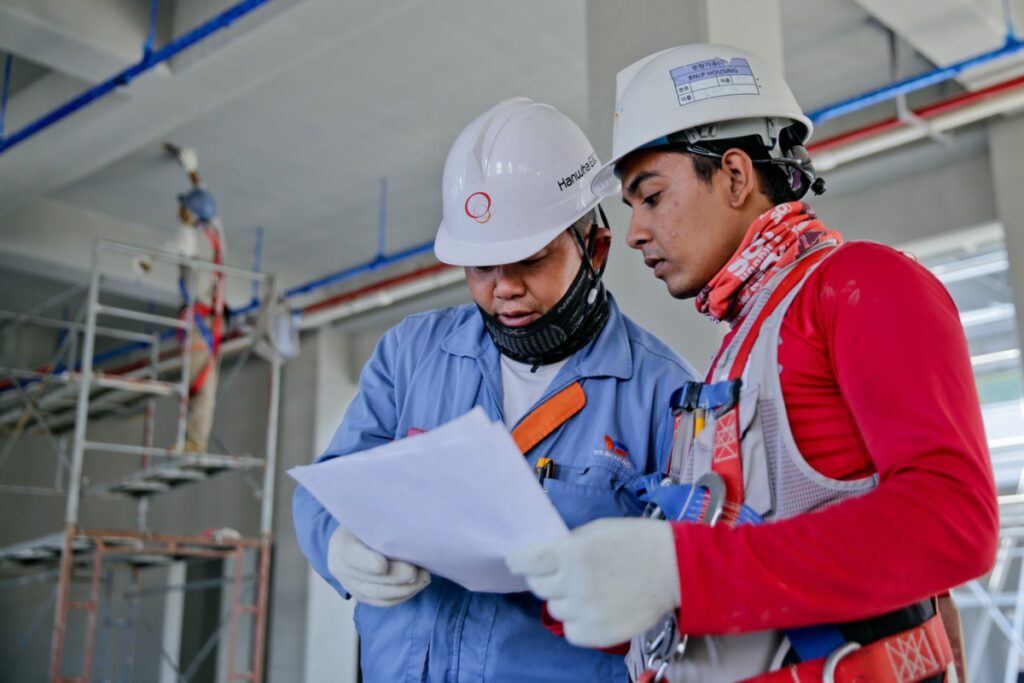Construction is one of the most dangerous industries in the world. In 2017, there were 991 fatal work injuries in the construction industry alone, according to the Bureau of Labor Statistics. That’s why it’s so crucial for small construction business owners to prioritize safety from day one. You want to protect your workers, avoid costly accidents and keep your business running smoothly.
Here are some essential safety tips every small construction business owner needs to know.
1. Establish clear safety protocols and enforce them rigorously.
The first step to keeping your construction site safe is establishing clear protocols and enforcing them strictly. This includes having a designated safety manager, conducting regular safety meetings, and performing regular safety audits. Taking these proactive steps can identify and correct potential hazards before they result in an accident or injury.

You should also develop clear guidelines for reporting accidents and injuries. Encourage your employees to speak up if they see something unsafe, and ensure they know you will take their concerns seriously. If an accident occurs, investigate thoroughly and make any necessary changes to your safety protocols.
2. Prioritize fall protection.
Falls are one of the leading causes of death and injury in the construction industry, so you must prioritize fall protection on your construction site. Some simple ways to do this include using guardrails, installing scaffolding, and requiring workers to wear personal fall arrest systems. Many falls can be prevented by following these basic safety measures.
Construction materials being lifted can also pose a falling hazard. You want to ensure your equipment is durable enough to handle what it carries. When lifting heavy construction materials and equipment, opt for a 2 leg chain sling that is more durable than a single wire rope sling and can help prevent materials from falling and injuring workers. It would be best if you also inspected your equipment regularly to look for any potential safety hazards.
3. Keep your workspace clean and organized.
A cluttered, disorganized workspace is a recipe for accidents and injuries. That’s why keeping your construction site clean and organized is essential. This means everything should be put away when not in use, walkways should be free of debris, and tools should be stored properly when not in use. Depending on the size of your construction site, you may need to hire a professional cleaning company to help you maintain a clean and safe workspace.
You also want to ensure your workers have enough space to do their job safely. This means having enough room to move around and reaching tools and materials quickly. If your construction site is cramped and cluttered, it’s time to consider expansion. You may need to rent a larger space or build an addition to your existing workspace.
4. Train your workers on how to use the equipment safely.
Another way to improve safety on your construction site is to train your workers on how to use equipment safely. This includes things like power tools, heavy machinery, and any other equipment they’ll be using on the job. Some safety hazards can be prevented by simply providing proper training to your workers.
You should also ensure your workers are properly trained on using personal protective equipment (PPE). This includes things like hard hats, safety glasses, and earplugs. Wearing PPE is essential for preventing injuries on the construction site. If your workers don’t know how to use PPE properly, they may not be wearing it correctly or using it at all.
5 . Have an emergency plan in place.
If an accident occurs on your construction site, you must have an emergency plan in place to respond quickly and appropriately. This emergency plan should include who to call, where to go, and what to do in case of an accident or injury. Having an emergency plan in place can help ensure that everyone on your construction site knows what to do if something goes wrong.
But accidents aren’t the only thing you need to be prepared for. It would help if you also had a plan for other emergencies, like fires, severe weather, and power outages. Being prepared for anything can help keep your construction site safe for everyone involved.
These are just a few safety measures small construction business owners need to consider. Following these tips can help create a safe working environment for your employees and reduce the risk of accidents or injuries on your construction site. However, it’s always important to stay up-to-date on safety regulations and procedures as they change over time. Keeping your finger on the pulse of emerging dangers is the best way to keep your construction site safe for everyone involved.
